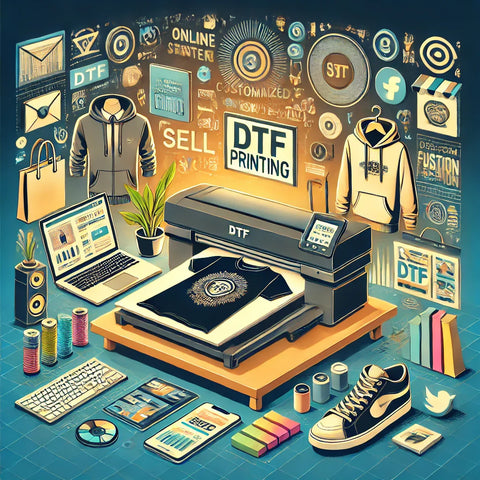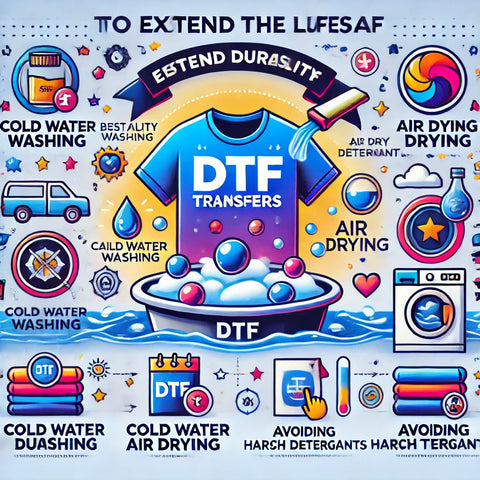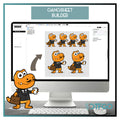DTF (Direct-to-Film) printing is revolutionizing the custom apparel and merchandise industry with vibrant, durable, and flexible prints. However, great prints start with great designs, and choosing the right design software is crucial for achieving professional-quality results.
Whether you’re a beginner looking for easy-to-use tools or a professional designer in need of advanced features, this guide will help you find the best design software for DTF printing.
1. What to Look for in a DTF Printing Design Software?
✔ Why It Matters:
Not all design software is optimized for DTF printing. The best tools should provide:
✅ High-Resolution Output – Ensures sharp, crisp prints without pixelation.
✅ CMYK & RGB Support – Most DTF printers require CMYK color profiles for accurate prints.
✅ Transparent Background Handling – Essential for seamless designs on garments.
✅ Vector & Raster Editing – Enables scalability and detailed artwork creation.
✅ File Compatibility – Supports PNG, AI, PSD, SVG, and TIFF formats for DTF printing.
📌 Pro Tip: Always create designs at 300 DPI or higher for the best print quality.
🚀 Example: A low-resolution JPG design might look fine on a screen but will appear blurry and pixelated when printed on fabric.
2. Best Professional Design Software for DTF Printing
✔ Why It Matters:
Professional software provides maximum flexibility, advanced features, and precision editing.
🎨 1. Adobe Photoshop (Best for Raster-Based Designs)
✅ Best For: Photo-based and high-detail designs.
✅ Key Features:
✔ Layer-based editing for complex designs.
✔ CMYK color mode for accurate color separation.
✔ Smart Objects & Filters for non-destructive editing.
✔ Transparent background export for seamless DTF printing.
📌 Pro Tip: Use clipping masks & layer styles to create textured print effects.
✏️ 2. Adobe Illustrator (Best for Vector-Based Designs)
✅ Best For: Logos, typography, and scalable artwork.
✅ Key Features:
✔ Vector graphics for sharp, scalable designs.
✔ CMYK & Pantone support for accurate colors.
✔ Pathfinder & shape tools for easy design customization.
✔ Saves files in AI, EPS, SVG, and PDF formats.
📌 Pro Tip: Convert text into outlines before saving your design to prevent font issues during printing.
🖌️ 3. CorelDRAW (Best for Print-Ready Graphics)
✅ Best For: Print professionals & advanced users.
✅ Key Features:
✔ CMYK & spot color support for perfect color accuracy.
✔ Advanced tracing tools to convert raster images into vectors.
✔ Multi-page document support for bulk design projects.
✔ Supports DTF-friendly file formats like PNG, TIFF, and AI.
📌 Pro Tip: Use PowerTRACE in CorelDRAW to convert low-resolution images into vector graphics.
🚀 Example: A vector-based DTF print design will remain crisp and sharp on any garment, unlike a pixelated raster image.
3. Best Free Design Software for DTF Printing
✔ Why It Matters:
For small businesses & beginners, free software offers affordable and effective design solutions.
🆓 4. GIMP (Best Free Alternative to Photoshop)
✅ Best For: Beginners and budget-conscious designers.
✅ Key Features:
✔ Layer-based editing similar to Photoshop.
✔ CMYK plug-in support for print accuracy.
✔ Transparent background support for seamless DTF transfers.
📌 Pro Tip: GIMP lacks native CMYK support, so install the Separate+ plug-in for better DTF color handling.
🆓 5. Inkscape (Best Free Vector Design Software)
✅ Best For: Logo design, typography, and scalable artwork.
✅ Key Features:
✔ Vector-based editing similar to Illustrator.
✔ SVG, PNG, and EPS file export for DTF printing.
✔ Node editing & path tools for detailed designs.
📌 Pro Tip: Convert all text into paths before exporting to avoid font issues.
🆓 6. Canva (Best for Quick & Simple Designs)
✅ Best For: Beginners and social media-friendly designs.
✅ Key Features:
✔ User-friendly drag-and-drop design tools.
✔ Pre-made templates for easy design creation.
✔ Exports in PNG format with transparent background (Pro version).
📌 Pro Tip: Use Canva Pro to remove backgrounds for cleaner DTF prints.
🚀 Example: A small Etsy seller can create quick, trendy T-shirt designs using Canva without needing advanced graphic skills.
4. Choosing the Right Software for Your Needs
✔ Why It Matters:
Your skill level, design needs, and business size determine the best software choice.
| Skill Level | Best Software |
|---|---|
| Beginner | Canva, GIMP, Inkscape |
| Intermediate | Photoshop, Illustrator |
| Advanced/Professional | CorelDRAW, Adobe Suite |
📌 Pro Tip: If you’re serious about DTF printing, investing in Photoshop or Illustrator will provide long-term benefits.
5. How to Prepare a Print-Ready DTF File
✔ Why It Matters:
A properly formatted file ensures high-quality prints with accurate colors.
✔ Steps to Prepare a Print-Ready Design:
✅ Set resolution to 300 DPI for crisp prints.
✅ Use CMYK mode instead of RGB for color accuracy.
✅ Remove background & save as PNG or TIFF.
✅ Convert all text to outlines to avoid font compatibility issues.
✅ Mirror the design before printing (if needed for heat transfers).
📌 Pro Tip: Always test-print your design before mass production to check for color accuracy and sharpness.
Final Thoughts: Which Design Software is Best for You?
📌 Key Takeaways:
✔ Adobe Photoshop & Illustrator – Best for professional-level DTF printing.
✔ CorelDRAW – Ideal for print industry professionals.
✔ GIMP & Inkscape – Great free alternatives for small businesses.
✔ Canva – Best for quick, beginner-friendly designs.
✔ Always use high-resolution, CMYK color mode, and transparent backgrounds for DTF prints.
🚀 Want to create stunning DTF prints? Choose the right design software and start crafting high-quality, vibrant designs today!






